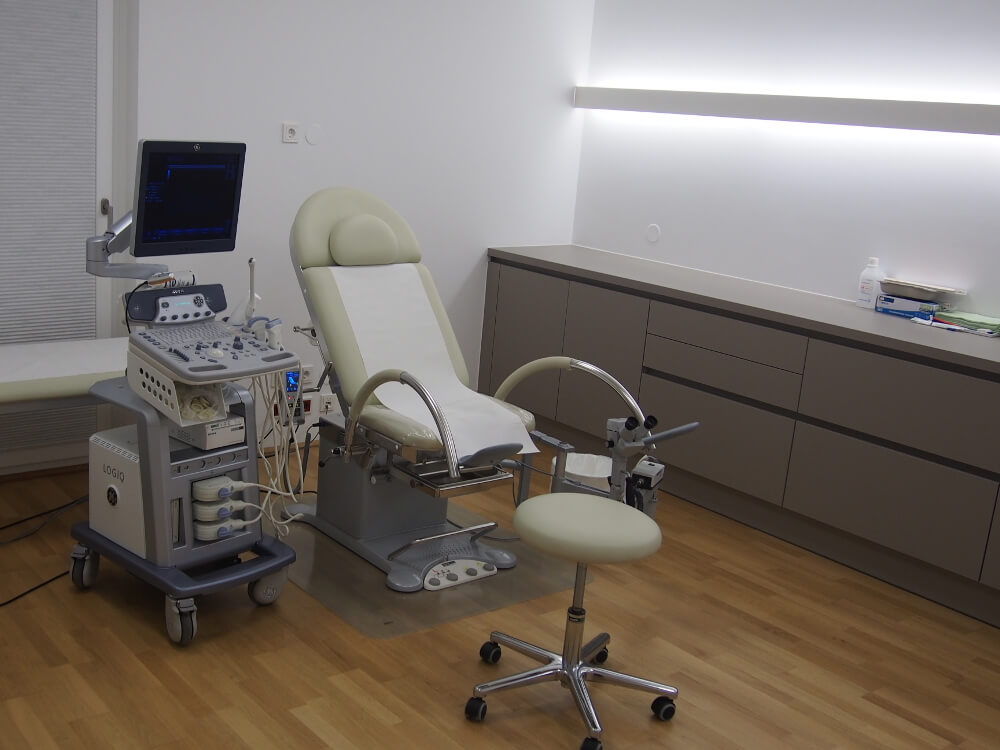Human Papillomavirus (HPV)
Virus & Transmission
Human papillomaviruses are a large group of viruses that can lead to abnormal cell growth in humans and can cause precancerous lesions, cancer and genital warts. There are more than 200 known types of HPV, at least 14 of which have cancer-causing effects. Human papillomaviruses are transmitted through direct contact with the mucous membranes, for example during sexual contact or, in rare cases, during childbirth from mother to child. There is a risk of infection as long as there is a (chronic) infection. Condoms do not offer reliable protection against infection with HPV.
Course of the disease and possible serious consequences of the disease
Certain types of virus can lead to unpleasant, contagious, rapidly growing, stubborn skin changes, primarily in the genital area (genital warts), which sometimes have to be removed with special ointments or by surgery and tend to recur.
Infections with cancer-causing HPV types (types 16 and 18), for example, are responsible for over 70% of all malignant cases of cervical cancer. Infections with these types are initially asymptomatic and in most cases heal spontaneously within 1 to 2 years. Long-standing infections lead to precancerous lesions and cancer of the cervix, vagina, vulva, penis, anus, pharynx, larynx and esophagus. The treatment of the cancer diseases mentioned or their precursors can be successful if diagnosed in good time, but leads to physically and mentally stressful treatments that can be associated with hospital stays, operations and the administration of chemotherapy. For the early detection of cervical cancer, the cancer smear (PAP test) is carried out as part of the gynecological check-up. If there is a suspicious finding that is confirmed in the further examination (=colposcopy, approx. 60,000/year in Austria), an operation on the cervix (=conization, in Austria per year approx. 6,000) may be necessary. These increase the risk of preterm birth in later pregnancies.
prevalence and frequency
Human papillomaviruses (HPV) are distributed worldwide. About 80% of all women and men will be infected with genital HPV during their lifetime. Cervical cancer is the third leading cause of cancer-related death in women worldwide. In Europe, 33,500 new cases of cervical cancer with about 15,000 deaths are registered every year, in Austria about 400 new cases of cervical cancer or 130-180 deaths.
Genital warts are also extremely common. More than 1% of sexually active people suffer from genital warts. Overall, every 10th person will develop genital warts during their lifetime.
Prevention – Vaccination protects!
The vaccination reduces the risk of genital warts and cervical cancer by up to 90%, and the risk of cancer of the throat, larynx, vagina, anus and penis is also significantly reduced. Vaccination against human papillomaviruses contains those virus types that most commonly cause the diseases described and is recommended for everyone up to the age of 30, after which it is optional. The greatest personal benefit is achieved by vaccination before engaging in sexual activity. People who are already sexually active can also benefit from the vaccination. Vaccination offers the best protection against the virus types contained. Girls and boys as well as women and men are affected by HPV diseases. Vaccination of people of both sexes is also important to break the chain of infection in the population. Gynecological check-ups (incl. PAP smear and HPV test for women over 30) should continue to be carried out at the recommended intervals, regardless of the vaccination.
When and how often do you vaccinate against human papillomavirus?
The HPV vaccination will be available free of charge from February 1st, 2023 from the age of 9 to the age of 21. In this age range, 2 doses in the 1+1 scheme are recommended. The 2nd dose should be administered after a minimum of 6 months and a maximum of 12 months. From the age of 15 to 21, the use of the 2-dose scheme is off-label use, which is recommended according to the Austria 2023 vaccination plan.
From the age of 21, HPV vaccination is recommended in a 3-dose scheme.
Since the greatest benefit of the vaccination occurs when it is given at a time when no contact with HPV has taken place, i.e. ideally before the first sexual contacts take place, vaccination is recommended from the age of 9 years. Research has also clearly shown that children in this age group respond best to the vaccine. The antibodies formed can optimally prevent the viruses from penetrating the body cells and thus preventing the infection.
After a conization (surgery on the cervix due to precancerous stage) an HPV vaccination is recommended, up to the age of 45 this is covered by the Austrian health insurance companies.
In the case of negative HPV results, a vaccination may also make sense. I would be happy to advise you in a personal conversation

 Up-to-date pregnancy care also includes information about useful and recommendable ultrasound examinations to detect possible malformations (nuchal translucency measurement, combined test, organ screening, NIPT Test).
Up-to-date pregnancy care also includes information about useful and recommendable ultrasound examinations to detect possible malformations (nuchal translucency measurement, combined test, organ screening, NIPT Test). The copper ions have an inhibitory effect on sperms and nidation and thus prevent pregnancy. The effect is limited to the uterus. The lifespan is generally 5 years.
The copper ions have an inhibitory effect on sperms and nidation and thus prevent pregnancy. The effect is limited to the uterus. The lifespan is generally 5 years.








